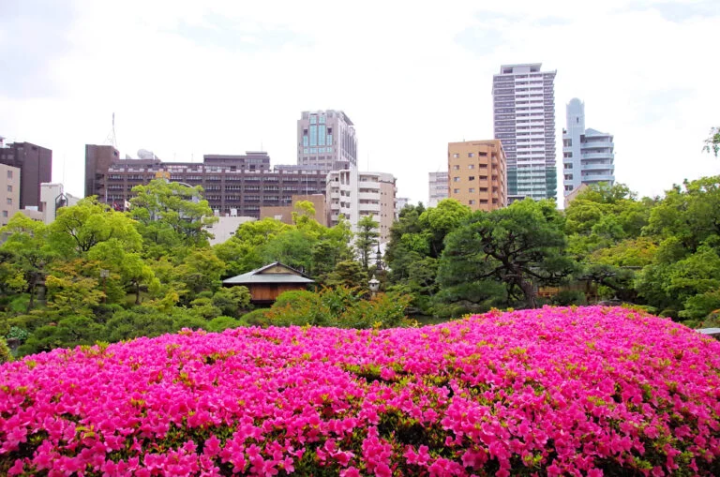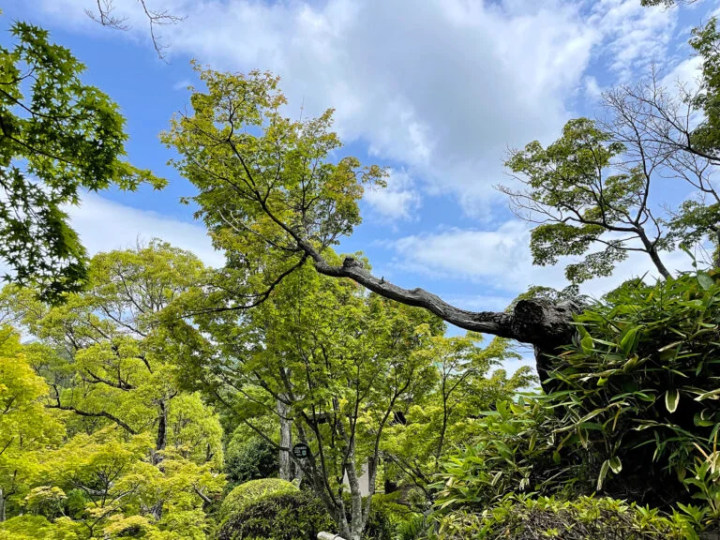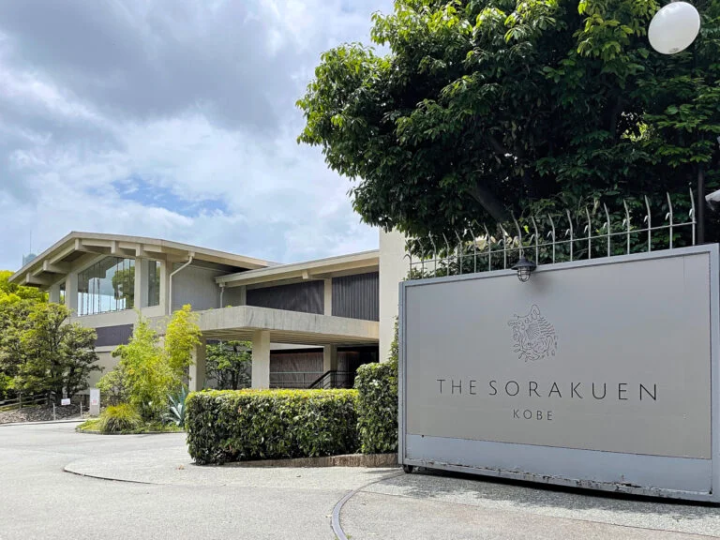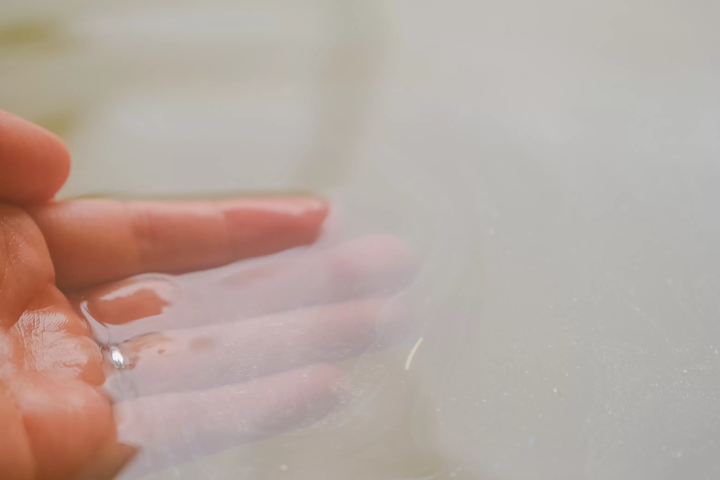[Kobe City] This is an oasis in the city! Kobe City Sorakuen is full of highlights
![[Kobe City] This is an oasis in the city! Kobe City Sorakuen is full of highlights](https://resources.matcha-jp.com/resize/720x2000/2023/12/21-158849.webp)
The park is full of important cultural properties such as the ``Old Hassam House'' and ``Funaya-gata'', the Sotetsuen Garden, a large camphor tree that is 500 years old, azaleas in the spring, and autumn leaves in the fall. Best of all, you will be soothed by the healthy appearance of the trees in the park, which have been maintained to make it easy to stroll around.
-
Table of Contents
- Great value bus tickets
- Japanese garden "Sorakuen" in the middle of Kobe city
- There are three nationally important cultural properties in the park.
- There are plenty of other things to see at Sorakuen
- Take a break at Sorakuen Parlour
- How to get to Sorakuen
- basic information
Great value bus tickets
Kobe 1-day bus ticket
This bus ticket allows unlimited use of the City Loop and Port Loop buses that run through Kobe city for 800 yen per day. If you're planning on touring Kobe's tourist sites, use this ticket for an easy and comfortable trip.
Hyogo Amazing Pass
If you are considering touring around Himeji and Hyogo prefecture in addition to Kobe, we recommend this ticket! This mobile ticket includes the contents of the Kobe 1-day bus ticket and allows unlimited rides on Shinki Bus route buses for 2,500 yen a day.
Japanese garden "Sorakuen" in the middle of Kobe city
Sorakuen is located in the area north of JR Motomachi Station, where the Hyogo Prefectural Government Office, Hyogo Prefectural Guest House, and Hyogo Prefectural Police Headquarters are located. Some people are surprised to find a Japanese garden in a place like this.
![[Kobe City] This is an oasis in the city! Kobe City Sorakuen is full of highlights](https://resources.matcha-jp.com/resize/720x2000/2023/12/21-158851.webp)
However, Sorakuen existed before the rows of buildings began to appear. It was originally the mansion of Taijiro Kodera (father of former Kobe mayor Kenkichi Kodera), which was completed at the end of the Meiji period, and was acquired by the city of Kobe in 1941 (Showa 16).
When I think back to when this place was first built, I can't help but feel the fusion of various cultures brought from overseas and Japanese culture. I can picture people going to work in Western clothes, and relaxing and strolling around the park in Japanese clothes on their days off.
![[Kobe City] This is an oasis in the city! Kobe City Sorakuen is full of highlights](https://resources.matcha-jp.com/resize/720x2000/2023/12/21-158852.webp)
Originally, the garden was called Cycad Garden because of the large number of cycads that were planted within, but it was renamed Soraku Garden after a line from the ancient Chinese book, the Book of Changes, which goes, "Rejoice and enjoy each other," and was opened to the public.
In recent years, the number of foreign visitors tourists has increased, and on the day of the interview (a weekday), it seemed that 20-30% of the visitors were individual foreign visitors tourists. There was also a wide variety of visitors, including groups taking pre-wedding photos (it's a standard spot for pre-wedding photos in traditional Japanese clothing in Kobe) and field trips for nearby kindergarten children. It's truly a place that deserves to be called an "urban oasis."
There are three nationally important cultural properties in the park.
![[Kobe City] This is an oasis in the city! Kobe City Sorakuen is full of highlights](https://resources.matcha-jp.com/resize/720x2000/2023/12/21-158853.webp)
The only remaining buildings from the time of construction are the main gate, made entirely of zelkova wood, and the "Former Kodera Family Stables" (an Important Cultural Property).
The Former Kodera Family Stables were designed by Kawai Kozo, an architect active during the Meiji and Taisho periods.
Buildings designed by Kozo Kawai include the Kobe District Court building, the former Nikko Kaikan (now Kaigan Building, a registered tangible cultural property), and the former Mitsui & Co. Kobe branch (now Kaigan Building, a registered tangible cultural property). The stables are built in the style of a German folk house, with a circular turret, steeply sloping roof and dormer windows, with a carriage house on the left, stables on the right, and the stablemen's accommodation on the second floor.
![[Kobe City] This is an oasis in the city! Kobe City Sorakuen is full of highlights](https://resources.matcha-jp.com/resize/720x2000/2023/12/21-158854.webp)
The Former Hassam House (Important Cultural Property) is the mansion of JK Hassam, an Indian-British trader. It was relocated from Kitano-cho, Chuo Ward. It has a Western-style exterior and a tiled roof. It retains the characteristics of a foreign-style house from the Meiji period. The servants' rooms and storehouse behind the main house, as well as the east gate, are all designated as Important Cultural Properties by the nation.
The two gas lamps in the front yard are some of the oldest in Japan and were located in the former settlement. There is a lot to see inside the building. The interior is open to the public during Golden Week and the autumn foliage season.
![[Kobe City] This is an oasis in the city! Kobe City Sorakuen is full of highlights](https://resources.matcha-jp.com/resize/720x2000/2023/12/21-158855.webp)
The building called Funayakata (an Important Cultural Property) was the roofed section of a river barge owned by the Himeji Domain (Himeji City) during the Edo period.
A gozabune is a boat used by feudal lords for their alternate attendance and sightseeing. The Funayagata is the only remaining river gozabune boat and is designated as an Important Cultural Property of Japan. It is also open to the public twice a year, at the same time as the Former Hassam House.
There are plenty of other things to see at Sorakuen

Although the important cultural properties are the main attraction, there are many other things to see at Sorakuen. The most popular season is the azalea season, which blooms from mid-April to early June. Throughout the garden, you can enjoy a variety of azaleas, starting with Enkianthus campanulatus, followed by Kirishima azalea, Hirado azalea, and Satsuki azalea.

The autumn foliage season is also popular. The scenery of the Japanese garden is particularly spectacular. There is a pond-centered strolling garden that cleverly utilizes a pond that was previously used for agricultural purposes, and the beautiful scenery unfolds. There are enkianthus azaleas and maples, and the beauty of the autumn leaves is sure to be quite something.
![[Kobe City] This is an oasis in the city! Kobe City Sorakuen is full of highlights](https://resources.matcha-jp.com/resize/720x2000/2023/12/21-158858.webp)
One of the attractions of Japanese gardens is that they can be enjoyed in any season. You can enjoy the sounds of birdsong, deer scare-off, and water chimes, as well as the sounds of water. If you walk around the pond, you will find a waterfall and a variety of cave-like areas. The cave represents the world of deep mountains and secluded valleys, and is the boundary to another world. If you go through it, the sound, wind, and light will change, so enjoy a dialogue with nature.

![[Kobe City] This is an oasis in the city! Kobe City Sorakuen is full of highlights](https://resources.matcha-jp.com/resize/720x2000/2023/12/21-158860.webp)
Immediately to the right after entering the main gate is the Cycad Garden. Cycads are considered to be auspicious plants because of their long life span. Taijiro Kodera had a deep attachment to these plants, and they are said to have been ordered from Kagoshima and planted, with some trees over 300 years old. As the name Cycad Garden suggests, it is rare to have so many of them.
![[Kobe City] This is an oasis in the city! Kobe City Sorakuen is full of highlights](https://resources.matcha-jp.com/resize/720x2000/2023/12/21-158862.webp)
This large camphor tree is said to be 500 years old and is designated as the city tree of Kobe.
This tree was planted by Araki Murashige, who is known for leading a rebellion against Oda Nobunaga. It is said that when Hanakuma Castle was constructed, it was planted here, in the direction of the evil spirits' gate. It stands tall in the center of Sorakuen Garden, and has a very stately presence. The size of the large lantern (yukimi lantern) at the base is also surprising. Its lid is the size of just over six tatami mats and weighs 11 tons. (The base (legs) have been replaced due to damage.)
![[Kobe City] This is an oasis in the city! Kobe City Sorakuen is full of highlights](https://resources.matcha-jp.com/resize/720x2000/2023/12/21-158863.webp)
Another tree designated as the citizen's tree of Kobe City is the white pine. It is a member of the pine family and is rare in Japan, but is said to be a "sacred tree" in China. You will be entranced by its magnificent shape.
![[Kobe City] This is an oasis in the city! Kobe City Sorakuen is full of highlights](https://resources.matcha-jp.com/resize/720x2000/2023/12/21-158864.webp)
The lawn plaza is a spot where you can see both of the citizen trees. During Mr. Kodera's time, garden parties were held here every year. It is a power spot surrounded by lively trees.

The paths in the Japanese garden are narrow and have many ups and downs, but they are well maintained and easy to walk on, making for a pleasant stroll. You'll be surprised by the vitality of a tree you come across or encounter a beauty that takes your breath away; there's always something new to discover every time you visit. There are also many tags with the names of the trees and two-dimensional codes, making it a great place to both appreciate plants and learn about them.
![[Kobe City] This is an oasis in the city! Kobe City Sorakuen is full of highlights](https://resources.matcha-jp.com/resize/720x2000/2023/12/21-158866.webp)
The stone lanterns placed here and there are also interesting. Some of them have dice shapes, giving them a playful feel. Everyone can enjoy Sorakuen in their own way.
What we can say for sure is that it is a pleasant space that is cool in the summer, colorful in the spring and fall, and full of life in the winter thanks to the evergreen trees. It is truly an oasis in the city.
Take a break at Sorakuen Parlour

Sorakuen Garden, which is home to several important cultural properties, once housed a building called "Sorakuen Kaikan" that was used as Kobe's guest house. Taking over this history, it has been operated as "THE SORAKUEN" since 2018, providing special hospitality as a venue for receptions and wedding receptions.
![[Kobe City] This is an oasis in the city! Kobe City Sorakuen is full of highlights](https://resources.matcha-jp.com/resize/720x2000/2023/12/21-158868.webp)
Once you step inside the building, you'll understand the atmosphere. If you go further in, you'll find "Sorakuen Parlor." This popular restaurant fills up at lunchtime. They offer a limited-edition daily lunch (weekdays only), Tajima beef yakiniku bowl, and hayashi rice.
![[Kobe City] This is an oasis in the city! Kobe City Sorakuen is full of highlights](https://resources.matcha-jp.com/resize/720x2000/2023/12/21-158869.webp)
This time we will introduce cafe time. The terrace seats overlooking the Japanese garden are popular, and seasonal menu items such as parfaits and cake sets are available.
![[Kobe City] This is an oasis in the city! Kobe City Sorakuen is full of highlights](https://resources.matcha-jp.com/resize/720x2000/2023/12/21-158871.webp)
We tried the popular standard item, "Homemade Pudding" (550 yen). Made with plenty of free-range eggs from "Keien Miyamoto" in Ono City, this firm pudding has a nostalgic and comforting taste. The cream made with orange liqueur gives it an adult impression, just like the atmosphere of the shop.
There is orange fruit underneath the cream, and the orange peel scattered around the edge adds a refreshing sour accent, allowing you to enjoy the change in flavor. As they researched and tried to create a specialty using local ingredients during the COVID-19 pandemic, this dish is full of a lot of thought. It's no wonder that there are fans who come just for this.
Sorakuen Parlour also holds limited-time events. For example, from June 1st to August 31st, 2023, they will be holding an event where they will be serving "Apple," known as the soul drink of Kobe. This is a rare opportunity to enjoy a juice from a long-established store that is rarely seen outside of Nagata Ward and Hyogo Ward, while looking out at the cool summer scenery of Sorakuen. Please check the official website.
Sorakuen Parlour is open until 5pm. If you want to enjoy dinner while looking at the illuminated Japanese garden, head to Restaurant Soraku on the second floor. However, reservations are required.
How to get to Sorakuen
There is no parking lot at Sorakuen. We recommend using public transportation. The nearest station is Kobe Municipal Subway "Kencho-mae" station, a 5-minute walk north. If you are using the bus, take the Shinki Bus Yamanote Line to "Subway Kencho-mae" and walk 5 minutes.
If you purchase the "City Loop Bus Ticket (1-day pass, 2-day pass)," you can also use the Yamanote Line route. However, please note that there are few buses on the Yamanote Line route. For more information on the "City Loop Bus," please see this article.
(Writer: Ryuji Tsukamoto)
*This article is current as of May 2023. Prices include tax. Product contents and prices may be subject to change.
basic information
Kobe Municipal Sorakuen Garden
Address: 5-3-1 Nakayamatedori, Chuo-ku, Kobe
Phone number: 078-351-5155
Business hours: 9:00-17:00 (entrance until 16:30)
Closed: Every Thursday (open on public holidays and closed the following day), December 29th to January 3rd
Admission fee: Adults (15 years and over) 300 yen, elementary and junior high school students 150 yen
Access: 5 minute walk from "Kencho-mae" station on the Kobe Municipal Subway Seishin-Yamate Line, 15 minute walk from "Hanakuma" station on the Kobe Rapid Railway Tozai Line, 10 minute walk from "Motomachi" station on the Hanshin Main Line, 10 minute walk from "Motomachi" station on the JR Kobe Line, 5 minute walk from "Subway Kencho-mae" on the Shinki Bus Yamate Line
Official site: http://www.sorakuen.com/
SNS: https://www.instagram.com/sorakuen_kobe/?hl=ja
Sorakuen Parlour (inside THE SORAKUEN)
Address: 5-3-1 Nakayamatedori, Chuo-ku, Kobe
Telephone number: 078-341-1191 (main)
Business hours: 11:00-17:00
Closed: Every Wednesday (may be closed temporarily)
Price: 100 yen discount when you show your receipt upon entering Sorakuen
Access: If you are heading directly to Sorakuen Parlour, you can enter through the North Gate. If you are entering through the Main Gate, you will need to pay an additional admission fee.
Parking: Free, 5 spaces (reservations not accepted)
Official website: https://www.the-sorakuen.jp/cafe/
What are good things and good experiences? There are many characteristics such as having a story to tell, overflowing with the thoughts of the creator, having a history, and being loved by the locals. Have you ever come across a special thing or experience that made you want to tell someone about it? And as a result of telling, someone new leads to something. We think that's what "good" is all about. In order to deliver such encounters to our customers, we discover Hyogo's good things based on the concept of "talk, communicate, and connect", and provide information that will shorten the emotional distance between customers and the region of Hyogo Prefecture.
The contents on this page may partially contain automatic translation.


![[Kobe City] A one-day bus ticket is a great deal if you want to visit Kitano Ijinkan-gai, Nankin-cho, and other famous spots in Kobe!](https://resources.matcha-jp.com/resize/200x2000/2023/09/25-146866.webp)
![[Hyogo Prefecture] Unlimited rides on local buses for just 2,500 yen! Travel around Hyogo Prefecture at a great price](https://resources.matcha-jp.com/resize/200x2000/2023/09/25-146913.webp)





























![[THE BLOSSOM KYOTO] Awaken your senses with the Kyoto aesthetic that lives on in the hotel](https://resources.matcha-jp.com/resize/720x2000/2025/07/01-237865.webp)


